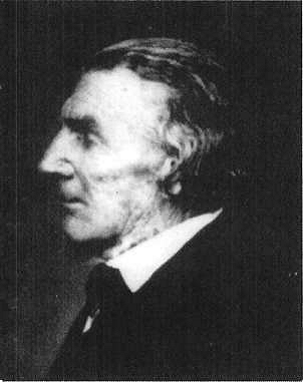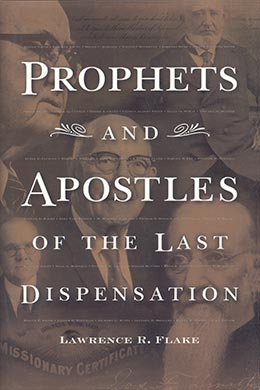John Smith
Lawrence R. Flake, Prophets and Apostles of the Last Dispensation (Provo, UT: Religious Studies Center, Brigham Young University, 2001), 311–13.

Born: 16 July 1781, Derryfield, New Hampshire
Assistant counselor to President Joseph Smith: 3 September 1837 (age 56) to 27 June 1844
Patriarch to the Church: 1 January 1849
Died: 23 May 1854 (age 72), Salt Lake City, Utah
It took considerable courage for John Smith, uncle of the Prophet and assistant counselor in the First Presidency, to enter the village of Carthage, which was filled with many blood-thirsty enemies of the Church on 26 June 1844. More than once his life was threatened and several guns were “snapped” (triggers pulled without firing) at him. Arriving at the jail where Joseph and Hyrum were imprisoned, he was rudely refused permission to see his nephews. When the Prophet saw this aging gentleman through the window, he said to the guard, “You will not hinder so old and infirm a man as he is from coming in.” [1] After being thoroughly searched, “Uncle John Smith” was permitted to spend a few minutes with the prisoners. Twenty-four hours later his two nephews were brutally murdered.
John Smith first heard of the Restoration in 1828 when his brother Joseph Smith Sr. wrote to their father, Asael, telling of young Joseph’s visions. Later the Prophet Joseph wrote a letter to his Uncle John on the same subject. In the summer of 1830, Joseph Smith Sr. visited his father’s family in St. Lawrence County, New York, and told them of the newly established Church. John was convinced of the truth of the work but was not baptized until January 1832 when, ill with consumption, the doctors had given him up to die. A hole was cut in the ice on a stream in order to perform the baptism. From that very day he regained his health and strength and lived twenty-two years longer. After moving to Kirtland in 1833, John became close to the Prophet, and at a conference in September 1837 Joseph chose him as an assistant counselor in the First Presidency.
Leaving from Kirtland, John filled a twenty-four-hundred- mile mission to the East with his brother Joseph Sr., during which they visited many of their relatives and baptized sixteen converts. He had the distinction of serving as president of four stakes of Zion located in four different states—Missouri, Iowa, Illinois, and Utah. Six months before the Prophet died, he ordained John a patriarch. The Prophet’s younger brother William was ordained patriarch to the Church in May 1845, succeeding his slain brother Hyrum, but he was rejected by the vote of the Church in the October conference that year. Although John’s oldest brother, Asael, was presiding patriarch by right, his health was so poor he could not function, and Uncle John Smith acted unofficially as patriarch to the Church until January 1849, when he was sustained and set apart to that position in Salt Lake City. Before his death in 1854, this great patriarch had administered 5,560 blessings. Uncle John Smith was described as “a man of the utmost honor and of sterling integrity both to God and man.” [2]
Notes
[1] History of the Church, 6:598.
[2] Matthias F. Cowley, Wilford Woodruff: History of His Life and Labors (Salt Lake City: Bookcraft, 1964), 349. See also Matthias F. Cowley, Prophets and Patriarchs of the Church of Jesus Christ of Latter-day Saints (Chattanooga, TN: Ben E. Rich, 1902), 114–17; Andrew Jenson, Latter-day Saint Biographical Encyclopedia (Salt Lake City: Andrew Jenson History, 1901), 1:183–86.
